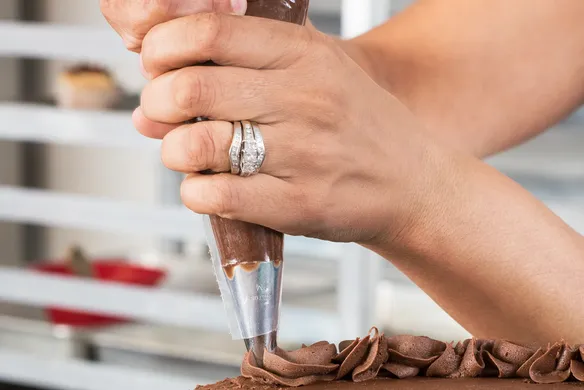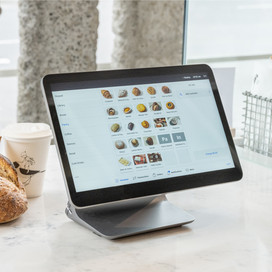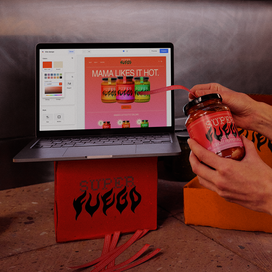Whether you’re starting from scratch or looking for new ways to grow your existing business, this guide contains everything you need to consider to get started with an online store or to offer delivery or pick up.
The online food business in Australia is growing massively. According to the Australian Bureau of Statistics, in January 2020, there was $515 million of recorded food related sales made online across Australia. By January 2021, this figure had increased to $908 million. These figures included both supermarket shopping and restaurants and take-aways with Australian consumers having more food options, restaurants and delivery companies to choose from, where should you start if you want to join this trend?
1. Build a business plan
If you are already running a food business or restaurant it makes a lot of sense to start offering online delivery, adapting your current business to an eCommerce one to reach new customers. But if you are just setting up, it’s worth considering what type of business you want to be.
As with any business you should start with a business plan. Ultimately you should be writing your plan to determine what you want your business to be, where you see it going, and what you want to achieve from it. Key questions to ask yourself would be:
- Who is your target market?
- What will your business offer?
- What can set your business apart from competitors?
- How will you sell online?
- Is any initial start up capital required?
- How will you market your business?
It is worth considering all your options before starting out on your business plan too. Setting up a takeaway is the obvious choice but there is a growing market for other food delivery-based online businesses. For instance, meal kits are an increasingly popular way for families to cook for themselves without having to physically shop for ingredients. Similarly food boxes, offering meat or veg are big business, allowing customers to buy directly from suppliers or farms and even make use of food that would otherwise have gone to waste. With the increase in online delivery options, smaller, local businesses have been offering their services too, almost as virtual newsagents, selling essentials such as eggs, flour and milk.
2. Find your niche
To start making up your menu, or to find your perfect products, you’re in an easier situation with an existing food business. Adapting your bricks and mortar restaurant menu for instance, should mean identifying what might travel well, what is popular in your restaurant already and starting with that. If it abides by Australia’s Food Safety Standards on delivery food safety, you’re good to go!
But if you’re new to the food business, a good idea would be to start with your personal passions as a way to find your product. For instance, are you already home baking, making jams in your free time, or a chef looking for a new challenge? Similarly, embracing dietary requirements that you have and are used to cooking for is an effective way to identify your product. For example, an UberEats survey found that 58% of Australians prefer to order food that is healthy.
The other way to find your niche, is to look into food trends and see what is out there that resonates with you and what you want to offer. Free software such as Google Trends is a great way to start looking into interest in certain foods and dishes over time. Similar free social media monitoring tools such as Hootsuite, or Sprout Social can also help find out what Aussies are talking about.
3. Plan your menu
Making up your menu will also include planning. Part of this should consider what you’re selling, at what price and where you are getting your ingredients from. As with any business you are providing a service or product in exchange for money, so you need to make sure you are charging enough for it to be worth your time and effort. Determining the costs of ingredients, per dish or product and where you are sourcing them from is one thing. But you should also be considering the costs of other production elements, energy bills, staffing costs (if applicable) and any hire for equipment or premises.
It’s also a good idea to do some market research into your local area and similar businesses to determine where to set your price points too. This can also help when determining what you will be offering in the first place.
4. Set up your space
Once you’ve found your niche you need to consider where you are setting up. If you’ve got a kitchen for your restaurant already then you should be all set. If not, your home kitchen could be a good place to start from. One thing to do first is to check if you need permission from your mortgage provider or landlord to start a business from your home. In some cases, you may also need to take out an insurance policy that is separate to your property policy, to cover your business.
You will also need to set up as a sole trader with the Australian Business Register, getting yourself and ABN. In running your own business as an individual and being self employed, you are classed as a sole trader and will need to file business tax annually.
Practically, you will then need to make sure that your kitchen is safe to produce food in and for people to work in, even if it is just you to begin with. To do this your kitchen will need to meet certain health and safety guidelines, you can find out more information on the Australian Institute of Health and Safety website. This includes things such as carrying out risk and fire assessments of your workplace as well as first aid training and equipment being available.
Home based food businesses need to comply with the following:
- Standard 3.2.2 – Food Safety Practices and General Requirements
- Standard 3.2.3 Food Premises and Equipment
- Part 1.2 – Labelling and Other Information Requirements
5. Register your business
Now you know what you’re offering and where you’re making it, you need to register with your local city council. You should do this at least 28 days before you plan to open or start operating as they may not approve it. You can’t have your application refused but you legally have to have one in place, whether you are a restaurant, cafe, take-away or offering any kind of distance selling, mail order or food delivery.
Once you’re approved by your local authority you should organise a food safety inspection. Food Safety Inspections are one of several government-mandated procedures designed to verify that food is clean and safe for customers. You may also be required to apply to have a Food Safety Program (FSP) accredited with Council. Check with your local government to find out more.
Alongside advice regarding food safety and the processes put in place from health and safety guidance, it is also a good idea to consider training for your staff and yourself. Anyone working in your food business would benefit from a Food Hygiene course. Independent institutions, such as Australian Institute of Food Safety offer online learning at various levels. Successfully completing these courses means you should be legally compliant and perform best practice with hygiene, food safety and ensuring your premises are up to standard.
6. Get your food business online
The benefits of being online as a food business are many. There are lower overheads based on running a physical restaurant, you have a growing market of consumers, you can start from home and there are existing delivery partners you can use to get set up.
To get online as a new business you really have two options. You can sign up with an existing delivery partner platform and use their infrastructure or do it independently and create your own online presence and offer delivery yourself. As an existing food business, your options are similar, but you would most likely have an online presence that you can either offer delivery directly from, or through social media channels or again, you can sign up with an existing delivery partner.
Setting up an online store from scratch can be surprisingly simple, but if you are planning on also going down the self delivery route you will have to consider more requirements and costs too. There are obvious costs, such as the purchase and upkeep of vehicles, petrol and tax but also taking out commercial vehicle insurance. As a private vehicle, your car or bike would not be covered as a food delivery vehicle. You then also have to consider the cost of employing a driver or doing it yourself.
Signing up with delivery partners helps cover all of this and not only that, allows your business access to their customer base, ordering platforms and delivery infrastructure, but it will cost you. Popular delivery services such as Uber Eats), Menulog and Deliveroo, all require an initial set up fee to partner with them and then take a percentage of each order in exchange for their platform and delivery. These commission percentages can range between 13% and 30%.
7. Take payments online
In most cases, this whole set up process can take as little as a few days to complete. Partnering with delivery partners also makes payment simple. Especially as you can use Square partners such as Delievrect to connect UberEats, Deliveroo and more delivery platforms directly to your account. This means all online orders made through delivery partners are automatically pushed to Square, saving time and keeping all your receipts and payments in one place.
If you’re going your own way, then Square can not only help with creating and setting up our own online store, but in taking payments too. You can use the Square Online Checkout to generate a simple online checkout link or button for your menu items, with the name and price displayed. Then share the link on your new or existing website, social media channels or even in emails.
With ecommerce partner Ecwid, you can also sync products from your Square catalogue with your website, social channels and even online marketplaces like Amazon, Etsy and eBay to create a single click purchase experience. Plus, it’s free to sign up this year. There are other partner options as well, you can browse these on the Square website.
As you can see, whether you’re taking an existing food business online or getting your idea off the ground entirely, there can be a lot to think about. But if you start from what you know best, what you’re passionate about and what interests others, you can be ready to launch sooner than you might think. After all, setting up your space can be as simple as kitting out your home kitchen and registering your new business with the right authorities is easy.
Square can then help customers get shopping as smoothly as possible, whether you’re setting up as an online store or offering delivery through our payment partners. Once you’re ready to go, the adventure really begins, as you grow your business, your menu and hopefully, your profit!
![]()











